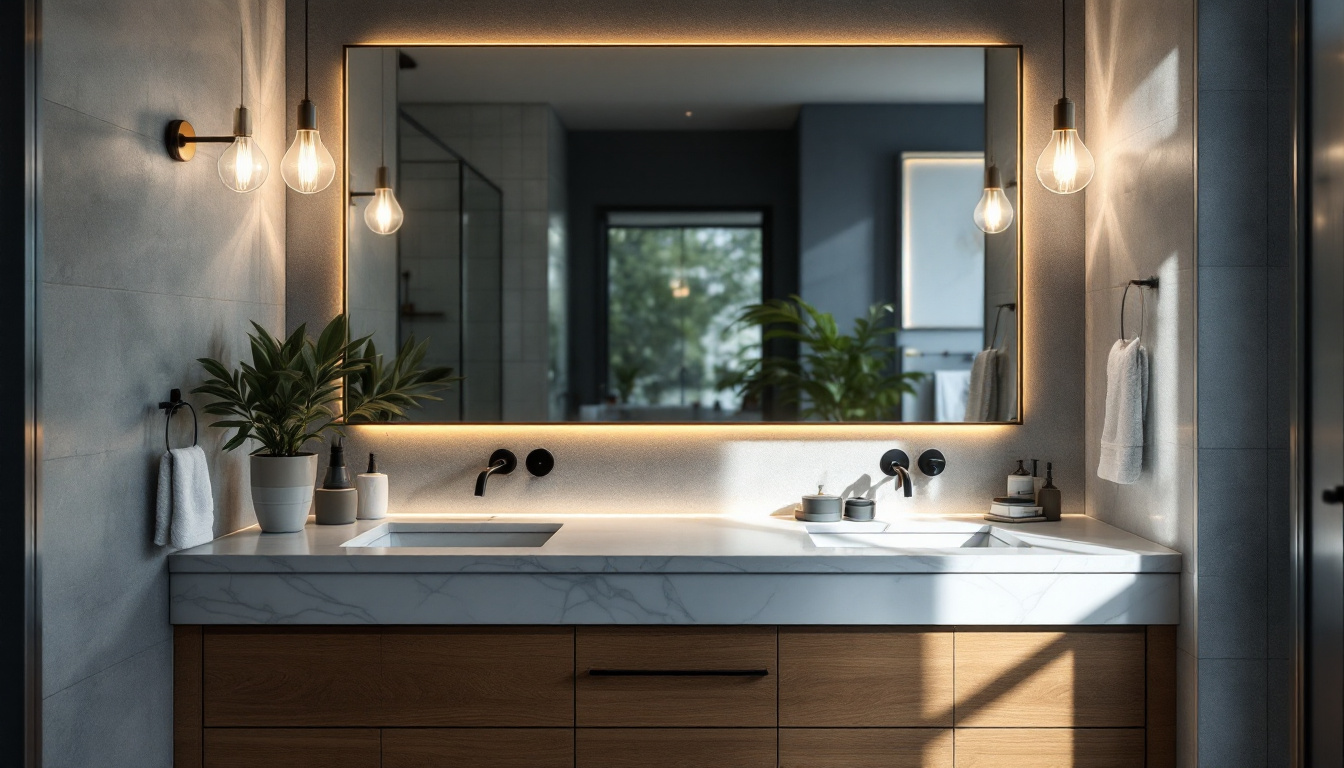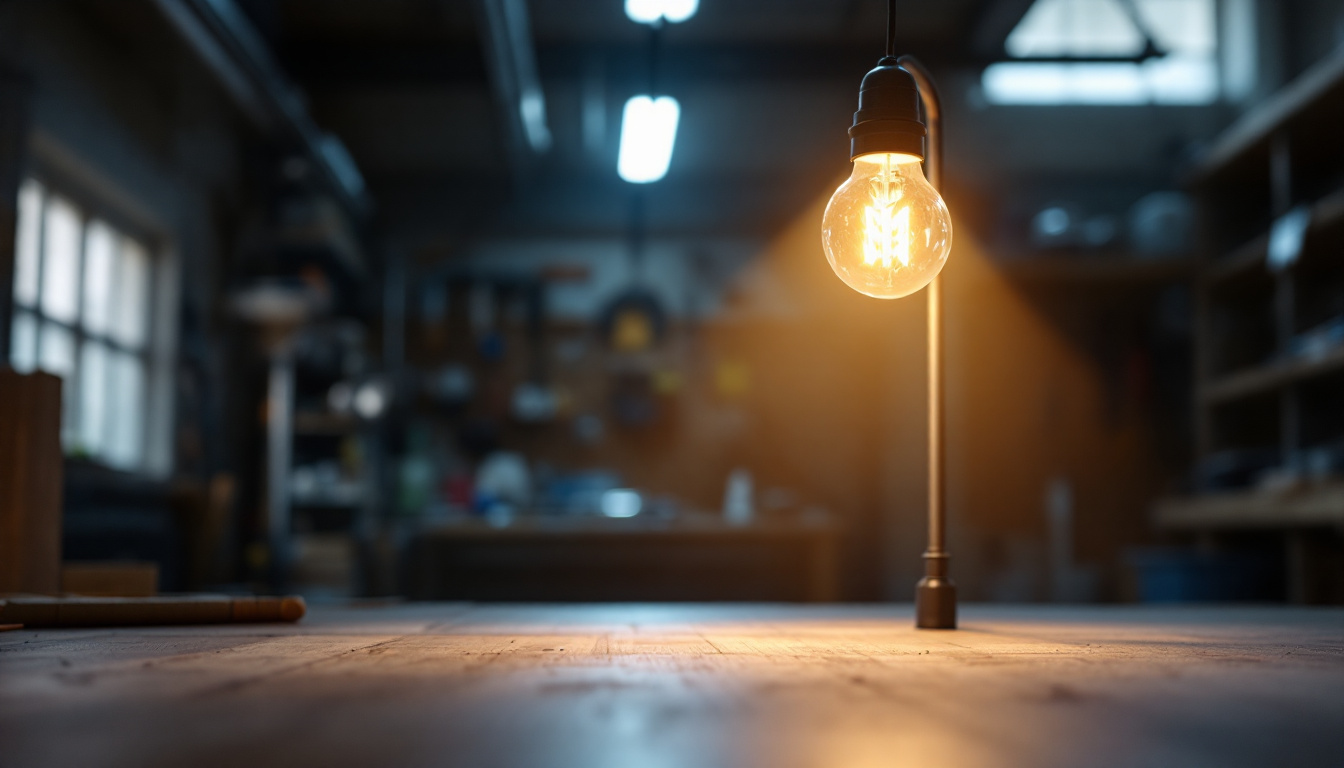
In the ever-evolving landscape of commercial lighting, the transition from traditional overhead lights to energy-efficient LED solutions is not merely a trend—it’s a necessity. For lighting contractors, understanding the myriad benefits of this shift is crucial for staying competitive and meeting client demands. Here are five compelling reasons why lighting contractors should prioritize replacing overhead lights with LEDs in business environments.
One of the most significant advantages of LED lighting is its remarkable energy efficiency. Compared to traditional incandescent or fluorescent bulbs, LEDs consume considerably less power while providing the same, if not better, illumination quality. This reduction in energy consumption translates directly into lower electricity bills for businesses. Furthermore, the lower heat output of LEDs means that less energy is wasted as heat, which can also contribute to cooling cost savings, especially in commercial spaces that require climate control.
While the initial investment in LED fixtures may be higher than that of conventional lighting, the long-term savings are undeniable. Businesses can expect to see a significant decrease in their energy costs over time, often recouping their investment within a few years. Additionally, many regions offer incentives or rebates for businesses that make the switch to energy-efficient lighting, further enhancing the financial benefits. These financial incentives can include tax deductions, grants, or even financing options that make the transition more manageable for businesses of all sizes, allowing them to allocate funds to other critical areas of their operations.
LEDs boast a lifespan of up to 25,000 hours or more, compared to the 1,000 hours typical of incandescent bulbs. This longevity means that businesses will spend less on replacements and maintenance. For contractors, this presents an opportunity to highlight the reduced maintenance costs to clients, making the switch to LEDs even more appealing. Moreover, the durability of LED fixtures, which are less prone to breakage and damage, further minimizes the need for frequent replacements. This reliability not only saves money but also ensures that businesses maintain consistent lighting, which is crucial for safety and productivity in workplaces.
In addition to the financial benefits, the environmental impact of switching to LED lighting is substantial. By consuming less energy, LEDs contribute to a decrease in greenhouse gas emissions, helping businesses to enhance their sustainability credentials. Many companies are now prioritizing eco-friendly practices, and adopting LED technology can be a significant step in demonstrating corporate responsibility. As consumers increasingly favor businesses that prioritize sustainability, this shift can also lead to improved brand loyalty and customer satisfaction.
Lighting quality plays a crucial role in the overall ambiance and functionality of a business space. LEDs offer superior color rendering capabilities, which can enhance the appearance of products and create a more inviting atmosphere for customers. This is particularly important in retail environments, where the right lighting can influence purchasing decisions. For instance, warm white LEDs can create a cozy and welcoming environment, encouraging customers to linger longer and explore more products. In contrast, cooler tones can be utilized in more modern settings to convey a sense of cleanliness and sophistication, appealing to a different demographic. The strategic use of lighting can thus serve as a powerful marketing tool, subtly guiding consumer behavior and enhancing brand perception.
Many LED systems allow for dimming and color temperature adjustments, enabling businesses to tailor their lighting to specific tasks or times of day. This flexibility can improve employee productivity and comfort, as well as enhance customer experiences. For example, during busy hours, brighter lighting can energize the space and help staff perform efficiently, while softer lighting in the evening can create a relaxed atmosphere for diners in a restaurant. Lighting contractors can leverage this feature by offering customized solutions that meet the unique needs of each business. Furthermore, integrating smart lighting technology can allow businesses to automate these adjustments based on occupancy or time of day, optimizing energy use and further reducing operational costs.
High-quality LED lighting provides better visibility, reducing the likelihood of accidents and injuries in workplaces. This is especially relevant in environments such as warehouses, manufacturing facilities, and retail stores. By prioritizing LED installations, contractors can contribute to creating safer workspaces, which is a significant selling point for potential clients. Enhanced visibility not only aids in preventing accidents but also improves overall operational efficiency, as employees can perform tasks with greater accuracy and confidence. Additionally, well-lit spaces can deter theft and vandalism, providing an added layer of security for businesses. The implementation of motion-sensor lighting in high-traffic areas can further enhance safety by ensuring that light is available exactly when and where it is needed, creating a proactive approach to workplace safety.
As businesses become increasingly aware of their environmental impact, the shift to LED lighting aligns with sustainability goals. LEDs are free from toxic substances like mercury, which is commonly found in fluorescent lights, making them a safer choice for both the environment and human health. Furthermore, the longevity of LED lights means they need to be replaced less frequently than traditional bulbs, which not only reduces waste but also conserves the resources that would be used in manufacturing and transporting replacement bulbs.
By reducing energy consumption, LEDs help lower greenhouse gas emissions associated with electricity generation. For contractors, promoting the environmental benefits of LED lighting can resonate with businesses looking to enhance their sustainability practices. This not only positions contractors as responsible partners but also opens doors to projects with eco-conscious clients. Additionally, the energy efficiency of LEDs can lead to significant cost savings over time, making them an attractive option for businesses aiming to reduce operational expenses while also committing to environmental stewardship.
LEDs are more easily recyclable than traditional lighting options, further minimizing waste. By educating clients about the recyclability of LED fixtures, contractors can encourage responsible disposal practices, contributing to a more sustainable future. This aspect can be a compelling addition to marketing materials aimed at environmentally conscious businesses. Moreover, many manufacturers are now implementing take-back programs, allowing businesses to return old LED fixtures for recycling, thus fostering a circular economy and reducing landfill contributions. Such initiatives not only enhance a company’s green credentials but also demonstrate a commitment to innovation in sustainability practices.
The rapid advancement of lighting technology has led to the development of smart LED systems that can be integrated into existing building management systems. These smart solutions offer enhanced control over lighting, allowing businesses to optimize energy usage based on occupancy and natural light levels. The integration of these systems not only promotes sustainability but also aligns with the growing demand for smart buildings that prioritize energy efficiency and user comfort.
Smart LEDs can be programmed to adjust automatically, ensuring that lights are only on when needed. This not only saves energy but also extends the lifespan of the fixtures. Lighting contractors should familiarize themselves with these technologies to provide clients with cutting-edge solutions that enhance operational efficiency. Moreover, the ability to control lighting remotely through mobile applications adds an extra layer of convenience, enabling users to manage their environments from anywhere, whether in the office or on the go. This flexibility can significantly improve the user experience, making workplaces more adaptable to the needs of employees.
Many smart lighting systems come equipped with sensors that provide valuable data on usage patterns. This information can help businesses make informed decisions about their lighting needs and further optimize energy consumption. Contractors can position themselves as experts in smart lighting, offering clients the latest innovations that drive efficiency and cost savings. Additionally, the data collected can be analyzed to identify peak usage times and areas that may require additional lighting or adjustments. This proactive approach not only enhances the overall functionality of the lighting system but also contributes to a more sustainable operational model, as businesses can reduce waste and allocate resources more effectively.
Beyond just lighting, the integration of smart LED systems with other smart technologies can create a cohesive and efficient environment. For instance, when combined with smart thermostats and occupancy sensors, lighting can be synchronized with heating and cooling systems to ensure that energy is not wasted in unoccupied spaces. This holistic approach to building management not only enhances comfort but also significantly reduces operational costs. Furthermore, as the Internet of Things (IoT) continues to evolve, the potential for interconnected systems will only grow, allowing for even more sophisticated automation and control options that can adapt to the dynamic needs of modern businesses.
In a crowded marketplace, lighting contractors must differentiate themselves from competitors. By prioritizing LED installations, contractors can offer a modern, efficient solution that meets the evolving needs of businesses. This proactive approach can significantly enhance client satisfaction and loyalty.
Clients appreciate contractors who are knowledgeable about the latest trends and technologies. By advocating for LED lighting, contractors can position themselves as trusted advisors, fostering stronger relationships with their clients. This trust can lead to repeat business and referrals, ultimately contributing to long-term success.
As energy efficiency standards become more stringent, businesses must adapt to comply with regulations. By prioritizing LED lighting, contractors can help clients stay ahead of these changes, ensuring their facilities meet current and future compliance requirements. This proactive approach can further enhance a contractor’s reputation as a reliable partner in the industry.
The transition to LED lighting is not just a passing trend; it is a fundamental shift that lighting contractors must embrace to remain competitive in the market. By understanding the energy efficiency, enhanced lighting quality, environmental benefits, technological advancements, and the competitive advantages of LED installations, contractors can position themselves as leaders in the industry.
As businesses increasingly prioritize sustainability and cost savings, lighting contractors have a prime opportunity to provide valuable solutions that meet these demands. By prioritizing LED lighting, contractors can ensure their clients enjoy the myriad benefits of modern lighting technology while also securing their place in a rapidly changing market.
In summary, replacing overhead lights with LEDs is a strategic move that offers substantial benefits for both contractors and their clients. By advocating for this transition, lighting contractors can enhance their service offerings, build stronger client relationships, and contribute to a more sustainable future.
Ready to lead the charge in the lighting industry and delight your clients with energy-efficient, cost-effective solutions? Look no further than LumenWholesale for all your LED lighting needs. Our commitment to providing contractors with spec-grade lighting products at unbeatable wholesale prices ensures that you can offer the best value to your clients. With our extensive selection that meets the highest industry standards and the convenience of free shipping on bulk orders, you’re set to transform business environments with top-quality lighting. Don’t let hidden fees or inflated markups dim your project’s potential. Choose LumenWholesale and experience the perfect blend of quality, affordability, and convenience. Wholesale Lighting at the Best Value is just a click away.

Discover the top benefits of bathroom vanity lights for lighting contractors, from enhancing aesthetics to improving functionality.

Discover how outdoor boxes for plugs are revolutionizing the lighting industry.

Discover why purchasing architectural wall packs in bulk from local distributors might not be the best choice.

Discover why the 4-way shop light bulb is a game-changer for lighting contractors.